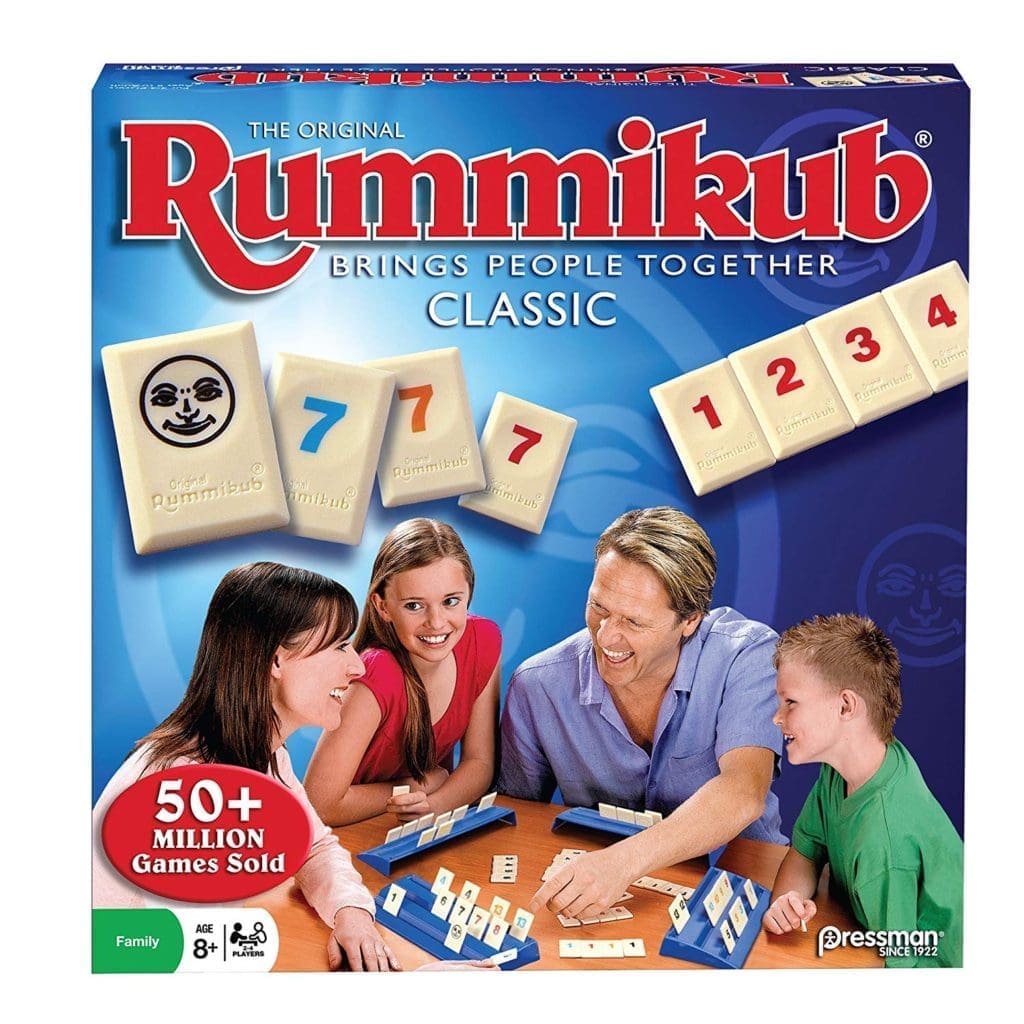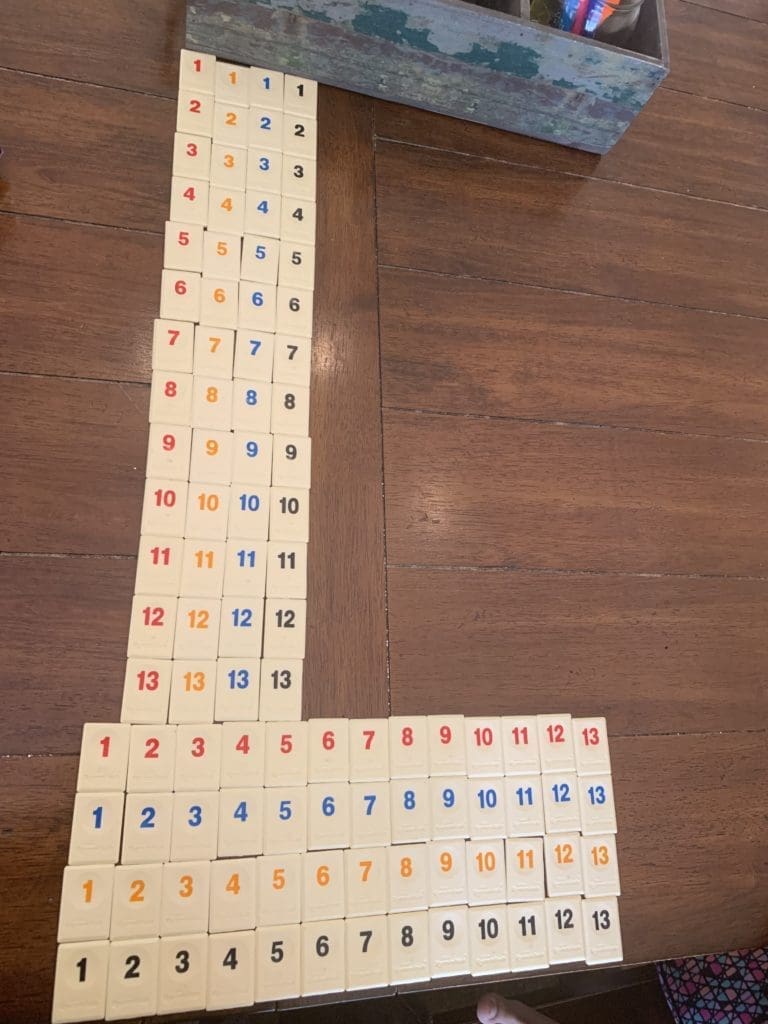
Board Game Geek describes the game Rummikub as “mathematical skill meets pure luck.” The game was invented in the forties by a Romanian Jew living in Israel who hand made the original games. It is similar to several European card games. According to Amazon, it is one of the world’s best-selling and most-played games with more than 50 million units sold. Rummikub is a great game for adults and children to play together. While it is recommended for ages 8 and up, I’ve played with many 6 and 7 year olds. It is the absolute hands down favorite math game of one of my gifted/talented 2nd grade students. Also two 7th graders I played with said it was “surprisingly fun”. While I have played with several kids who didn’t care for the actual game, they did enjoy arranging the number tiles into sequences and color patterns.

The game consists of 106 plastic tiles with numbers in four different colors and four plastic tile racks. The object of the game is to be the first player to use all of your tiles. Players do this by combining them tiles in runs (consecutive numbers in the same color) or sets (groups of the same number in different colors.) They can build onto existing runs/sets on the table, and can even strategically reorganize the tiles already out on the table.
Variations On Traditional Play
The rules for the game state that for a player’s first move, they must play a set with a value of at least 30 points, but I usually disregard this when playing with kids. We generally don’t keep score at all; we just play as the winner is the person who uses all of their tiles first.
Games For Young Minds has a post about using a “face up” game play version to collaborate and model mathematical thinking.
3 Boys and a Dog has a post about their family math night using Rummikub. They added a bonus of candy for placing and combining sets, or solving a math equation based on your set.
Of course you can also use the game’s colored number tiles for lots of math activities other than the actual game. Little Lady Plays has a post about using the game’s tiles to teach math skills (sequencing, number matching, addition to young children.) Multiplication.com’s blog suggests turning the tiles face down and having your child choose two to add or multiply.
